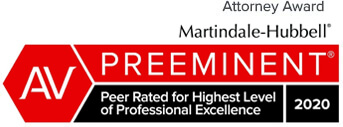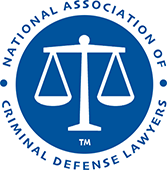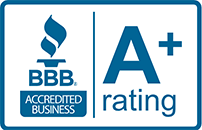Drug Paraphernalia
Many alleged drug possession offenses involve people also being charged with some type of drug paraphernalia offense. Some individuals can be charged with drug paraphernalia crimes even when they did not possess any controlled substance.
Ohio has multiple statutes pertaining to drug paraphernalia as well as a section of the Ohio Revised Code for drug abuse instruments. While these are misdemeanor offenses in Ohio, convictions will still appear on criminal records and can lead to many long-term hardships in employment, housing, and professional licensing matters.
Lawyer for Drug Paraphernalia Arrests in Dayton, OH
If you were arrested anywhere in the greater Montgomery County area for any kind of alleged criminal offense involving drug paraphernalia or drug abuse instruments, it will be in your best interest to retain legal counsel as soon as possible. Joslyn Law Firm aggressively defends clients facing drug charges in communities all over the Miami Valley area, including Fairborn, Dayton, Kettering, Huber Heights, Troy, Piqua, Springfield, Beavercreek, and many others.
Dayton criminal defense attorney Brian Joslyn will work to help you achieve the most favorable outcome to your case that results in the fewest possible penalties. Call (937) 356-3969 today to have our lawyer provide a complete evaluation of your case during a free, confidential consultation.
Ohio Drug Paraphernalia Information Center
- How is drug paraphernalia defined in Ohio?
- What are drug abuse instruments?
- Where can I find more information about drug paraphernalia in Dayton?
Drug Paraphernalia Penalties in Montgomery County
As used in Ohio Revised Code § 2925.14(A), drug paraphernalia is defined as “any equipment, product, or material of any kind that is used by the offender, intended by the offender for use, or designed for use, in propagating, cultivating, growing, harvesting, manufacturing, compounding, converting, producing, processing, preparing, testing, analyzing, packaging, repackaging, storing, containing, concealing, injecting, ingesting, inhaling, or otherwise introducing into the human body, a controlled substance in violation of this chapter.” The term includes, but is not limited to, any of the following equipment, products, or materials that are used by an alleged offender, intended by the alleged offender for use, or designed by the alleged offender for use, in any of the following manners:
- A kit for propagating, cultivating, growing, or harvesting any species of a plant that is a controlled substance or from which a controlled substance can be derived;
- A kit for manufacturing, compounding, converting, producing, processing, or preparing a controlled substance;
- Any object, instrument, or device for manufacturing, compounding, converting, producing, processing, or preparing methamphetamine;
- An isomerization device for increasing the potency of any species of a plant that is a controlled substance;
- Testing equipment for identifying, or analyzing the strength, effectiveness, or purity of, a controlled substance;
- A scale or balance for weighing or measuring a controlled substance;
- A diluent or adulterant, such as quinine hydrochloride, mannitol, mannite, dextrose, or lactose, for cutting a controlled substance;
- A separation gin or sifter for removing twigs and seeds from, or otherwise cleaning or refining, marihuana;
- A blender, bowl, container, spoon, or mixing device for compounding a controlled substance;
- A capsule, balloon, envelope, or container for packaging small quantities of a controlled substance;
- A container or device for storing or concealing a controlled substance;
- A hypodermic syringe, needle, or instrument for parenterally injecting a controlled substance into the human body; or
- An object, instrument, or device for ingesting, inhaling, or otherwise introducing into the human body, marihuana, cocaine, hashish, or hashish oil, such as a metal, wooden, acrylic, glass, stone, plastic, or ceramic pipe, with or without a screen, permanent screen, hashish head, or punctured metal bowl; water pipe; carburetion tube or device; smoking or carburetion mask; roach clip or similar object used to hold burning material, such as a marihuana cigarette, that has become too small or too short to be held in the hand; miniature cocaine spoon, or cocaine vial; chamber pipe; carburetor pipe; electric pipe; air driver pipe; chillum; bong; or ice pipe or chiller.
Ohio Revised Code § 2925.14(B) states that a court or law enforcement officer shall consider, in addition to other relevant factors, all of the following when determining if any equipment, product, or material is drug paraphernalia:
- Any statement by the owner, or by anyone in control, of the equipment, product, or material, concerning its use;
- The proximity in time or space of the equipment, product, or material, or of the act relating to the equipment, product, or material, to a violation of any provision of this chapter;
- The proximity of the equipment, product, or material to any controlled substance;
- The existence of any residue of a controlled substance on the equipment, product, or material;
- Direct or circumstantial evidence of the intent of the owner, or of anyone in control, of the equipment, product, or material, to deliver it to any person whom the owner or person in control of the equipment, product, or material knows intends to use the object to facilitate a violation of any provision of this chapter. A finding that the owner, or anyone in control, of the equipment, product, or material, is not guilty of a violation of any other provision of this chapter does not prevent a finding that the equipment, product, or material was intended or designed by the offender for use as drug paraphernalia.
- Any oral or written instruction provided with the equipment, product, or material concerning its use;
- Any descriptive material accompanying the equipment, product, or material and explaining or depicting its use;
- National or local advertising concerning the use of the equipment, product, or material;
- The manner and circumstances in which the equipment, product, or material is displayed for sale;
- Direct or circumstantial evidence of the ratio of the sales of the equipment, product, or material to the total sales of the business enterprise;
- The existence and scope of legitimate uses of the equipment, product, or material in the community; and
- Expert testimony concerning the use of the equipment, product, or material.
Ohio Revised Code § 2925.14(C)(1) makes it a fourth-degree misdemeanor punishable by up to 30 days in jail and/or a fine of up to $250 for a person to knowingly use, or possess with purpose to use, drug paraphernalia. Under Ohio Revised Code § 2925.14(C)(3), it is a second-degree misdemeanor punishable by up to 90 days in jail and/or a fine of up to $750 for a person to place an advertisement in any newspaper, magazine, handbill, or other publication that is published and printed and circulates primarily within this state, if the person knows that the purpose of the advertisement is to promote the illegal sale in this state of the equipment, product, or material that the offender intended or designed for use as drug paraphernalia.
Ohio Revised Code § 2925.14(C)(2) makes it a second-degree misdemeanor for a person to knowingly use, or possess with purpose to knowingly sell, or possess or manufacture with purpose to sell, drug paraphernalia, if the person knows or reasonably should know that the equipment, product, or material will be used as drug paraphernalia. If the alleged offender was also guilty of selling drug paraphernalia to juveniles, a violation of Ohio Revised Code § 2925.14(C)(2) is a first-degree misdemeanor punishable by up to 180 days in jail and/or a fine of up to $1,000.
Ohio Revised Code § 2925.141 also makes it a minor misdemeanor punishable by a fine of up to $100 for a person to knowingly use, or possess with purpose to use, any drug paraphernalia that is equipment, a product, or material of any kind that is used by the person, intended by the person for use, or designed for use in storing, containing, concealing, injecting, ingesting, inhaling, or otherwise introducing marijuana (referred to in state law as “marihuana “) into the human body.
A court can also suspend an alleged offender’s driver’s or commercial driver’s license or permit for up to five years if convicted of any of these paraphernalia offenses. The court will also immediately transmit a certified copy of the judgment entry of conviction to the regulatory or licensing board or agency that has the administrative authority to suspend or revoke the alleged offender’s professional license if he or she is a professionally licensed person.
Dayton Drug Abuse Instrument Penalties
Under Ohio Revised Code § 2925.12, it is a second-degree misdemeanor if a person knowingly makes, obtains, possesses, or uses any instrument, article, or thing the customary and primary purpose of which is for the administration or use of a dangerous drug, other than marijuana, when the instrument involved is a hypodermic or syringe, whether or not of crude or extemporized manufacture or assembly, and the instrument, article, or thing involved has been used by the offender to unlawfully administer or use a dangerous drug, other than marijuana, or to prepare a dangerous drug, other than marijuana, for unlawful administration or use. If an alleged offender has been previously convicted of a drug abuse offense, possessing drug abuse instruments becomes a first-degree misdemeanor.
As with paraphernalia offenses, drug abuse instrument convictions can also result in courts suspending the driver’s or commercial driver’s license or permits of alleged offenders for up to five years and immediately transmitting certified copies of judgment entries of conviction to the regulatory or licensing boards or agencies that have the administrative authority to suspend or revoke the professional licenses of alleged offenders if they are professionally licensed persons.
Ohio Resources for Drug Paraphernalia Offenses
Drug crimes reported to the Ohio Incident-Based Reporting System (OIBRS), 2004-2014 — OIBRS is Ohio’s version of the FBI’s National Incident Based Reporting System (NIBRS), a voluntary crime reporting program that allows Ohio law enforcement agencies to submit crime statistics directly to the state and federal government in an automated format. View the full text of this report describing drug crimes reported to OIBRS between 2004 and 2014. Drug paraphernalia offenses were the second most common drug crime during this time period, and you can a view a map of the state showing drug paraphernalia rate by county.
State v. Green, 2016-Ohio-4810 — Celine Green was convicted of possession of marijuana and illegal use or possession of marijuana paraphernalia following her arrest during a traffic stop of her vehicle due to a loud exhaust. The trial court denied Green’s motion to suppress all evidence collected from the warrantless search of her and her vehicle, along with any statements she made to police, asserting that the officers extended the stop beyond the reasonable time without reasonable suspicion to do so. The Seventh District Court of Appeals reversed the trial court’s judgment, concluding that “the evidence gathered from the dog sniff should have been suppressed” because “the dog sniff extended the stop beyond the time reasonably required to complete the traffic investigation for a loud exhaust.”
Joslyn Law Firm | Dayton Drug Paraphernalia Defense Attorney
Were you arrested for an alleged drug paraphernalia or drug abuse instrument offense anywhere in the Miami Valley? You should try not to say anything to authorities until you have contacted Joslyn Law Firm.
Brian Joslyn is an experienced criminal defense lawyer in Dayton who represents residents of and visitors to areas in Greene County, Montgomery County, Miami County, and Clark County. You can have our attorney review your case and discuss all of your legal options when you call (937) 356-3969 or submit an online contact form to schedule a free initial consultation.



























